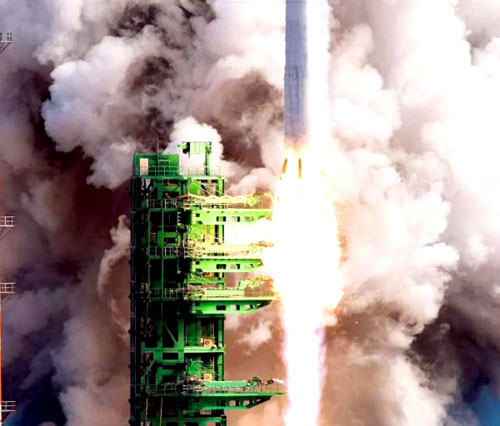South Korea said Tuesday it had successfully launched its homegrown space rocket and placed a payload into orbit in a “giant leap” for the country’s quest to become an advanced space-faring nation. Korea Satellite Launch Vehicle II, nicknamed Nuri and emblazoned with the South Korean flag, lifted off at 4:00pm (0700 GMT) from the launch site in Goheung on the southern coast, trailing a column of flame.
All three stages of the rocket worked, taking it to its target altitude of 700 kilometres (430 miles), and it successfully separated a performance verification satellite and put it into orbit, Seoul said. South Korea’s space program “has taken a giant leap forward,” said Lee Jong-ho, minister of science and technology, adding he declared the mission a success.
“South Korea has now become the seventh nation in the world to launch a space vehicle with homegrown technology,” he said, adding the government would continue its quest to become “an advanced space-faring nation”. South Korea will launch a Moon orbiter in August, Lee added. The Tuesday test, South Korea’s second test launch of its homegrown space rocket, comes eight months after the first test failed to put a dummy satellite into orbit. In the first test last October, all three stages of the rocket worked with the vehicle reaching an altitude of 700 kilometres, and the 1.5-tonne payload separating successfully. But it failed to put a dummy satellite into orbit after the third-stage engine stopped burning earlier than scheduled.—APP










